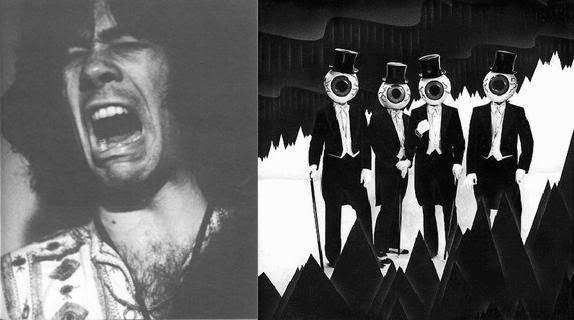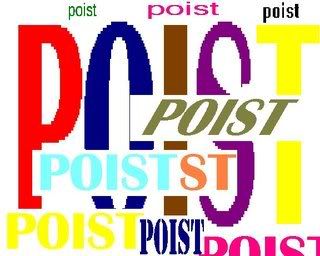/PAlogo_v2.gif) |
|
Post Reply 
|
Page <123 |
| Author | ||
MikeEnRegalia 
Special Collaborator 

Honorary Collaborator Joined: April 22 2005 Location: Sweden Status: Online Points: 21133 |
 Posted: November 11 2005 at 12:14 Posted: November 11 2005 at 12:14 |
|
|
^ exactly. So 7/4 should also be simple time.

|
||
 |
||
Badabec 
Forum Senior Member 
Joined: November 14 2005 Location: Germany Status: Offline Points: 1313 |
 Posted: November 20 2005 at 16:34 Posted: November 20 2005 at 16:34 |
|
Same thing with me.  He's right, just believe him. Edited by Badabec |
||
 |
||
Badabec 
Forum Senior Member 
Joined: November 14 2005 Location: Germany Status: Offline Points: 1313 |
 Posted: November 20 2005 at 16:40 Posted: November 20 2005 at 16:40 |
|
Why shouldn't you use a 29/16? I've written a song with a part in 17/16. It's not just the time signature which is important for a good sound, it's more the rhythm and the melody. Edited by Badabec |
||
 |
||
Soulman 
Forum Senior Member 
Joined: January 22 2005 Status: Offline Points: 290 |
 Posted: November 30 2005 at 01:25 Posted: November 30 2005 at 01:25 |
|
|
Man I just started picking up on the world of abstract rhythms and time signatures. It's freaking amazing
 .
I'm finally starting to understand songs like "Starless and Bible
Black" and "By-Tor the Snow Dog" and being able to apply it to my own
playing. .
I'm finally starting to understand songs like "Starless and Bible
Black" and "By-Tor the Snow Dog" and being able to apply it to my own
playing.I think this entire thread has answered the majority of my thoughts on this topic. Yet I'm still puzzled by what are "traditional" or "non-traditional" ways to play certain compound time signatures. I think my only question is if anybody has seen a time signature like 7/10 or 16/9...and what do those denominators represent. |
||
 |
||
Certif1ed 
Special Collaborator 

Honorary Collaborator Joined: April 08 2004 Location: England Status: Offline Points: 7559 |
 Posted: November 30 2005 at 03:35 Posted: November 30 2005 at 03:35 |
|
|
Those time signatures are "impossible" with the traditional notation system: 1/1 represents a Semibreve 1/2 represents a Minim 1/4 represents a Crotchet 1/8 represents a Quaver 1/16 represents a Semiquaver
...and so on.
The current (ancient) system used in Western Music splits beats from the Semibreve, or whole note, as it is bizarrely known, and treats other note lengths as fractions of Semibreves. So the top number is the number of beats in a bar, and the bottom number represents the length of the beat in terms of fractions of a Semibreve. The dividing line can be seen as the mathematical symbol for division - e.g. 4/4 is 4 "quarter" beats per bar. This attempt to explain everything (including why 7/4 is simple time and 7/8 is compound time) - but still leaves a lot of questions unanswered: http://www.answers.com/topic/time-signature#copyright
However, I think the system itself is confusing, misleading, misunderstood - even by academics - and not appropriate for the way that people write music these days.
If the system was changed to a decimalised notation, and a multiplier used instead of a divider, then you could have 4X0.25 instead of 4/4, which would open up the use of dotted crotchets as beats in their own right, instead of the current limited use of dotted crotchets in compound time. So 4 dotted crotchets in a bar could be represented by 4X0.375. Doesn't really trip off the tongue like 12/8, does it? But really, the whole system should be overhauled, IMO, so the the Breve regains its proper status as 1, and every other note is a fraction of that - ie, a crotchet should really be 1/8, not 1/4. As it currently stands, a SEMIbreve represents a whole note, purely because common time became more widely accepted as groupings of semibreve bars rather than breve bars, which were felt to be too long for quick music, which was more popular outside the church.
/ends ramble and hopes it's useful... |
||
 |
||
Andrew Vernon 
Forum Newbie 
Joined: November 26 2005 Status: Offline Points: 37 |
 Posted: November 30 2005 at 09:12 Posted: November 30 2005 at 09:12 |
|
|
Hope no one reams me...
Anyway... I write riffs and stuff in various signatures, I'll often come up with something that sounds cool, record it, and then count it out by listening back. Tool use a lot of different time signatures in their music, the track The Grudge for instance switches between 5/8, 5/4, and 6/4 at various places. Learning the song though is just a case of counting in 5/4 and adding crotchets in certain places - even though it is notated differently. Here is a riff that I came up with recently as an exercise... Download One Download Two Stars off in 7/8 for two bars, then a bar of 8/8, and a final bar of 7/8 before looping again. Count it out if it'll help you understand. For rock music it really is just down to the ability to count the beats you're working in. If you're writing in 10/4, try splitting it up in various ways. You don't even have to stick with splitting it into 5/4 or 6/4 + 4/4. When notating things, it's pretty important to stick to conventions. But when composing and when coming up with ideas, you can go anywhere. 10/4 to me might be 5/4 twice, but to someone else they might count it as 4/4 + 3/4 + 2/4 - if it helps them play in 10/4, then I see no problem with it. |
||
|
over thinking, over analyzing separates the body from the mind.
feed my will to feel this moment, urging me to cross the line. reaching out to embrace whatever may come. |
||
 |
||
progismylife 
Forum Senior Member 

Joined: October 19 2006 Location: ibreathehelium Status: Offline Points: 15535 |
 Posted: March 30 2007 at 14:11 Posted: March 30 2007 at 14:11 |
|
|
Wow such a great thread. It deserves a bump.
|
||
 |
||
rileydog22 
Forum Senior Member 
Joined: August 24 2005 Location: New Jersey Status: Offline Points: 8844 |
 Posted: March 31 2007 at 02:34 Posted: March 31 2007 at 02:34 |
|
If I'm not mistaken, you can have denominators that are not powers of two, but you have to tuplet the hell out of the thing to make it work. You can write it out much easier in normal denominators. |
||
  |
||
 |
||
Trickster F. 
Prog Reviewer 
Joined: February 10 2006 Location: Belize Status: Offline Points: 5308 |
 Posted: March 31 2007 at 02:40 Posted: March 31 2007 at 02:40 |
|
|
Question: can we all just skip that and enjoy the music?
|
||
|
sig
|
||
 |
||
MikeEnRegalia 
Special Collaborator 

Honorary Collaborator Joined: April 22 2005 Location: Sweden Status: Online Points: 21133 |
 Posted: March 31 2007 at 03:44 Posted: March 31 2007 at 03:44 |
|
|
For many of us analyzing these things is a big part of the enjoyment.

|
||
 |
||
rileydog22 
Forum Senior Member 
Joined: August 24 2005 Location: New Jersey Status: Offline Points: 8844 |
 Posted: April 03 2007 at 22:33 Posted: April 03 2007 at 22:33 |
|
|
I find the distinction between different denominators to be a matter of perception/notation; I may count a semibrive (or "whole note" to normal folks) as half the length of semibreve, and thus have a different denominator than you. The only time that that length is standardized is on sheet music. So when I just sit down and listen to, say, Tubular Bells, the opening could be counted as 15/16 or 15/8 or 15/2, depending on how I count my whole notes.
|
||
  |
||
 |
||
coleio 
Forum Senior Member 
Joined: February 06 2006 Location: United Kingdom Status: Offline Points: 272 |
 Posted: April 05 2007 at 13:37 Posted: April 05 2007 at 13:37 |
|
|
^^ Got a point. I don't know if it's because I'm rubbish at understanding time signatures, but I can sometimes listen to something an can give it multiple time signatures, just different counting.

|
||
|
Eat heartily at breakfast, for tonight, we dine in Hell!!
|
||
 |
||
Post Reply 
|
Page <123 |
| Forum Jump | Forum Permissions  You cannot post new topics in this forum You cannot reply to topics in this forum You cannot delete your posts in this forum You cannot edit your posts in this forum You cannot create polls in this forum You cannot vote in polls in this forum |